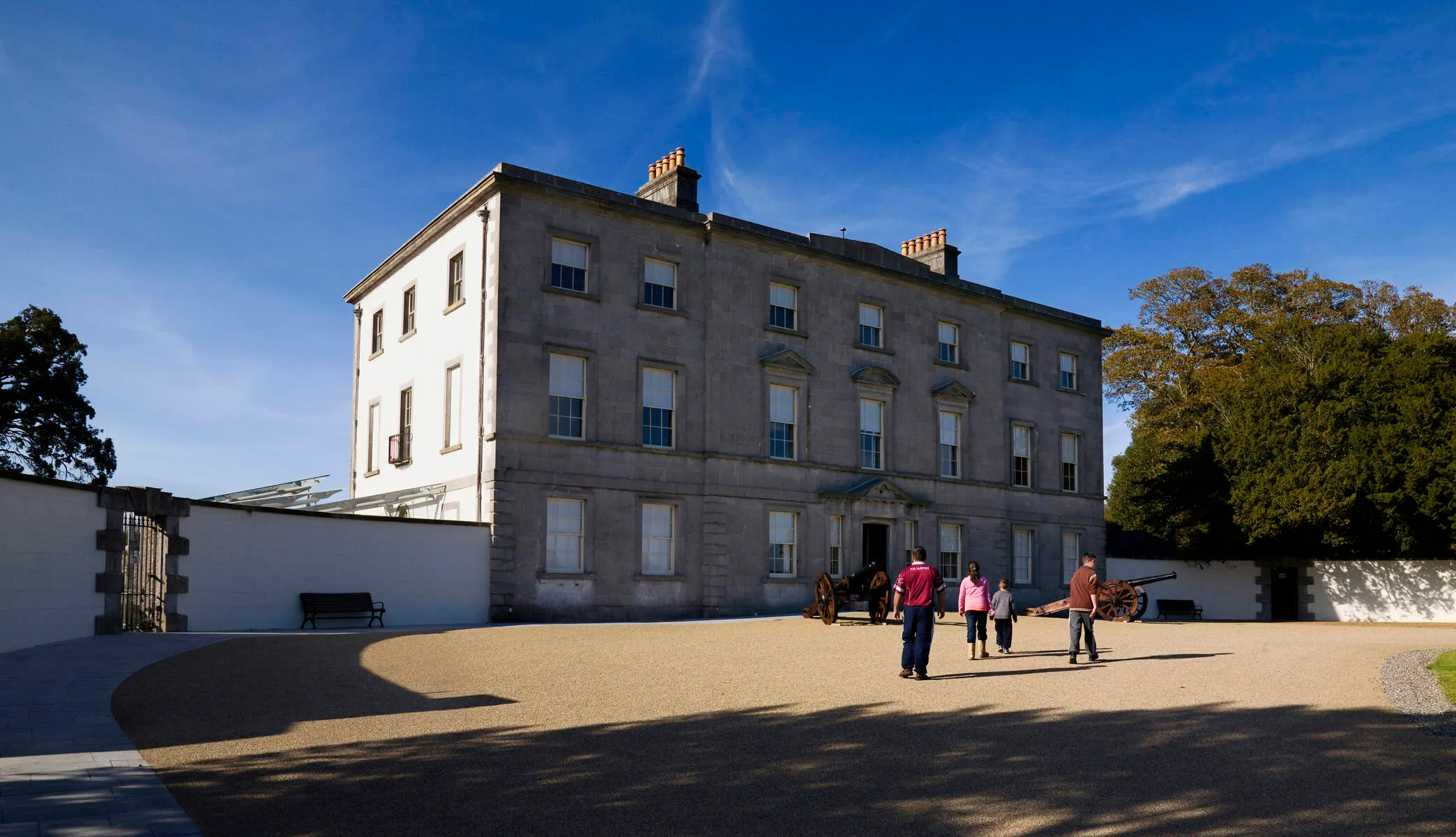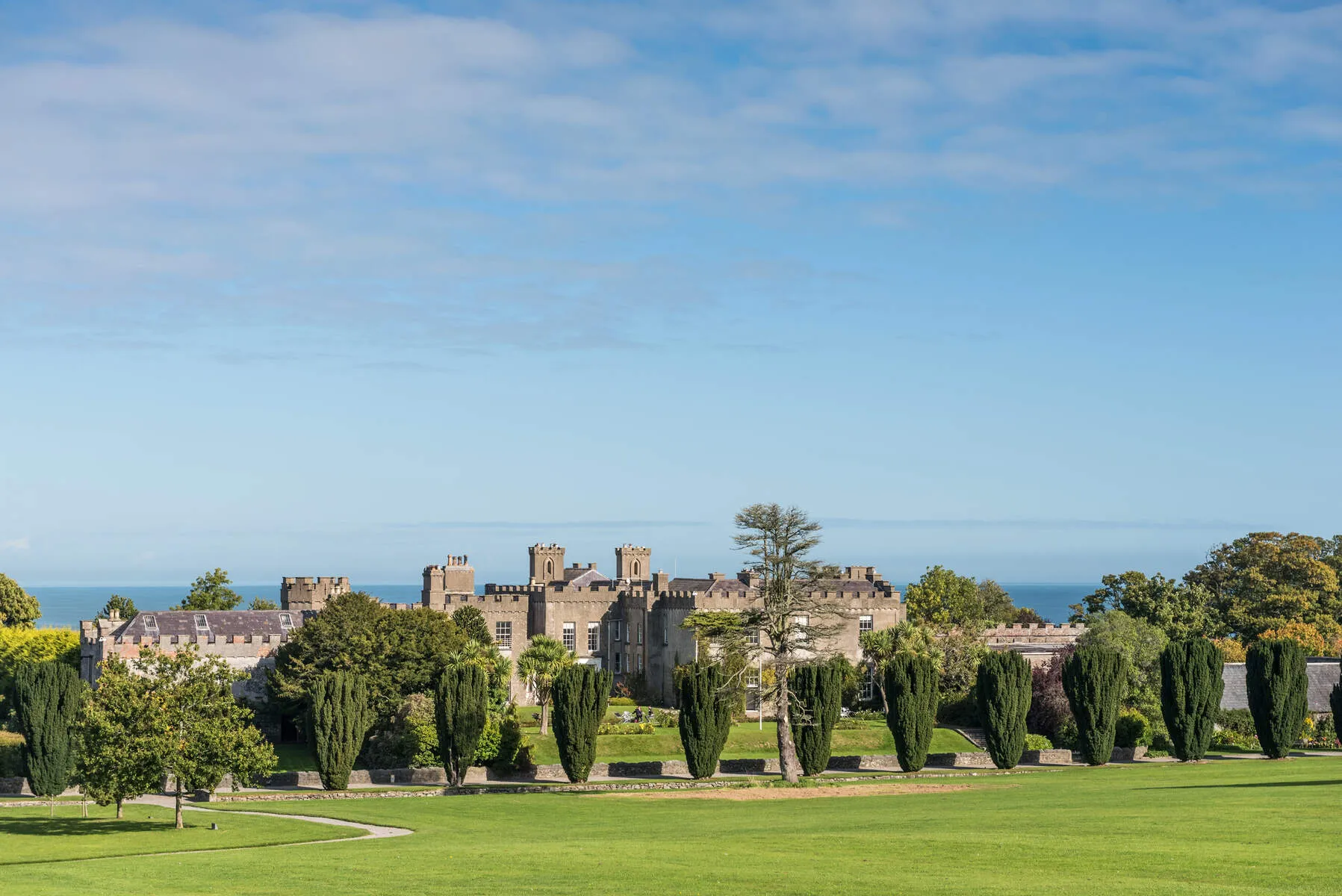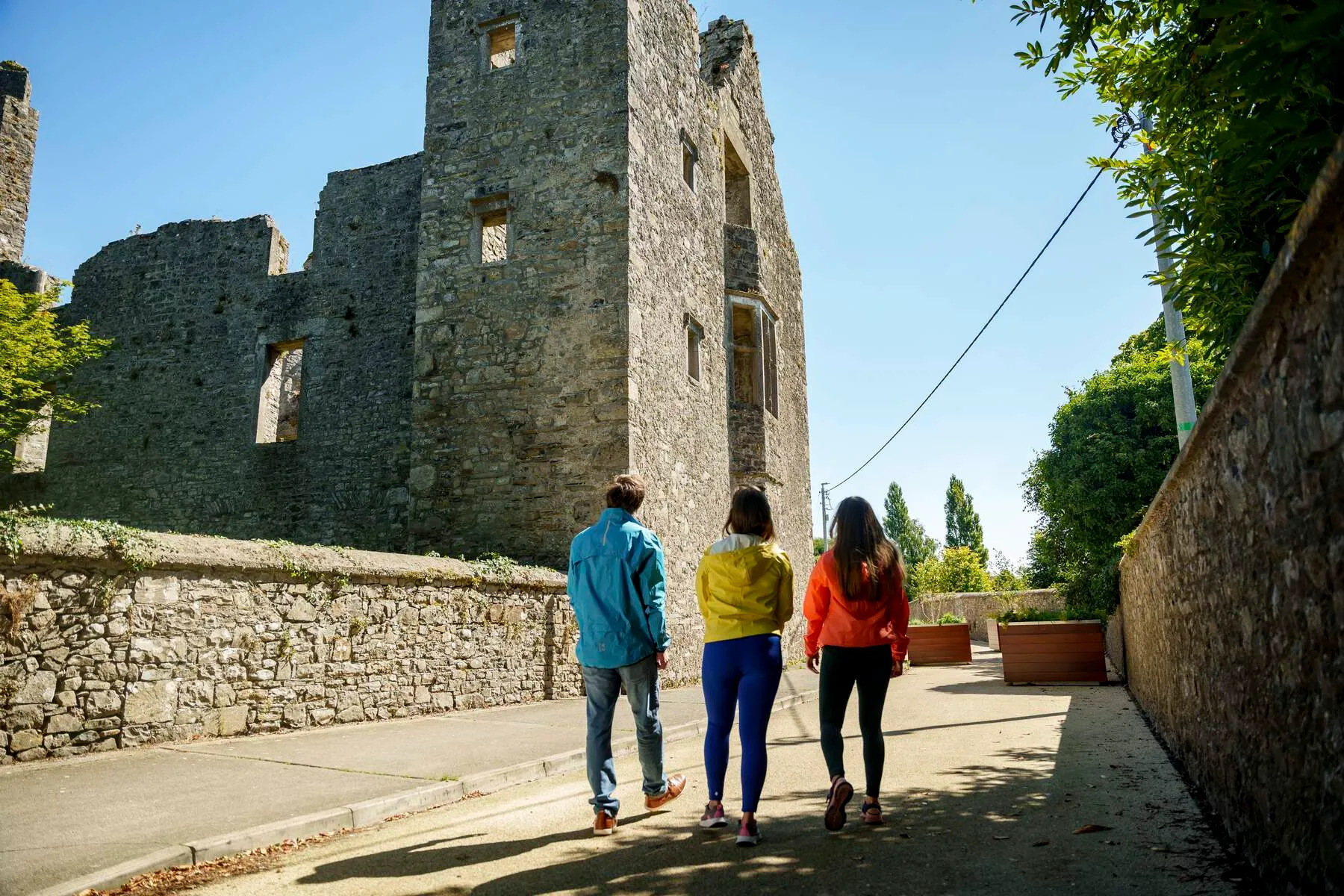On the east bank of the River Boyne in County Meath, Athlumney Castle offers a fascinating glimpse into Ireland's medieval and early modern eras. This National Monument, Caisleán Éth Luimnigh in Irish, occupies a site rich in history and strategy. Its name, "Loman's Ford," connects it to St. Loman, a 5th-century bishop associated with Trim and said to be a nephew of St. Patrick himself. While its roots go back to a 12th-century Norman motte built shortly after the invasion, the most impressive remains are the 15th-century tower house and the adjoining 17th-century fortified manor. Together, they show how needs changed over time – from the stark security of the tower to the relative comfort and style of the Tudor-influenced manor. Sitting where the Leinster Blackwater meets the Boyne, the castle's location highlights why it was such a contested spot, caught up in conflicts from the Norman conquest right through to the Williamite Wars.
The buildings themselves tell a story. The Dowdall family built the four-story tower house in the 1400s, complete with corner turrets and a spiral stair. Just inside the entrance, a 'murder hole' overhead speaks to its defensive purpose, while the barrel-vaulted ground floor chamber feels secure and ancient. Hidden rooms within the walls might have served as priest holes during times of religious persecution. Attached is the grander three-story manor house, added in the late 1500s or early 1600s. Features like stone-mullioned windows, an elegant oriel window facing the river, and a fine limestone doorway showcase the Dowdalls' status – they were prominent figures in Irish law. The manor's large kitchen likely warmed the upper floors, suggesting a more comfortable lifestyle than the older tower allowed, though blocked-up entrances and carefully placed windows show that defence was still a concern.
Athlumney's past is marked by fire and conflict. During Cromwell's notorious 1649 siege of nearby Drogheda, the castle was deliberately burned by its defenders to prevent it falling into Parliamentarian hands. Then, in 1690, history repeated itself. Sir Launcelot Dowdall, the last Lord of Athlumney, set fire to the manor house after the Battle of the Boyne to deny it to King William's advancing army. Dowdall subsequently fled to France, and his family lost their lands by 1700. Later owners, like the Somervilles, left less of a mark than the Dowdalls. Today, visitors (who can arrange access locally) can wander the ruins, tracing the burn marks on timbers and imagining life within these walls, now exposed to the elements.
Exploring Athlumney connects you directly to Ireland's complex history. Its key location and involvement in major conflicts serve as a powerful reminder of centuries of shifting power. Nearby archaeological finds, including an early Christian souterrain and the remains of a 12th-century church, add further depth. Even in ruins, with dramatic views over the Boyne, the site speaks silently of rebellion and resilience. A visit, especially in the greener months of spring or summer, allows for quiet reflection on a time when these walls sheltered bishops, soldiers, and eventually, exiled lords. The atmospheric ruins, slowly being reclaimed by nature, powerfully evoke the memory of a once-thriving estate.
Getting There
By Car
From Dublin, take the M3 motorway towards Cavan and exit at junction 7. Follow signs for Navan, then proceed onto Athlumney Road (R153). At the first turn after Navan, take a right onto Convent Road-a narrow, one-way lane. Continue for half a mile; the castle will be on your left. From Navan town center, drive southeast on the R162 (Dublin Road) for 1 mile, turn right onto Convent Road, and follow the same route.
By Public Transportation
Navan Bus Station (Market Square) serves Bus Éireann routes 109 and 111, which travel towards Athlumney. Alight at the stop nearest to Convent Road and walk 0.5 miles to the castle. These buses provide the primary public transit link from Navan.
Parking
Parking is available at the property. Nearby, a small green area in the adjacent Athlumney Castle housing estate offers additional parking, situated close to the castle grounds. On Convent Road, a short distance from the site, meter-free street parking is available, though drivers should note the one-way system requiring exits from the opposite end of the road.
Parking at all locations is free of charge, with no payment methods required. No time restrictions are in place, allowing visitors flexibility during their stay. While accessibility-specific parking is not explicitly mentioned, the on-site driveway and nearby areas are described as having sufficient space. During peak seasons or events, if on-site parking fills up, Convent Road or the housing estate's green area provide practical alternatives. The closest option-the cobble-locked driveway-places visitors just steps from the castle entrance, while other lots remain within a short, easy walk.
Nearby Attractions

Boyne Valley Battlefield Site (Oldbridge)
The Boyne Valley Battlefield Site at Oldbridge serves as a powerful memorial to a crucial moment in Irish history: the Battle of the Boyne, fought on July 1, 1690. This battle was a major showdown bet...
Distance: 15.8 km

Ardgillan Castle
Standing guard on the coast of County Dublin, Ardgillan Castle is a testament to centuries of history and natural beauty. Originally built in 1738 as Prospect House by Reverend Robert Taylor, the esta...
Distance: 34.7 km

Cavan County Museum
Cavan County Museum stands as a vibrant repository of the history and culture of County Cavan, offering a journey through 6,000 years of human occupation. Housed in the former 19th-century Convent of ...
Distance: 42.2 km
